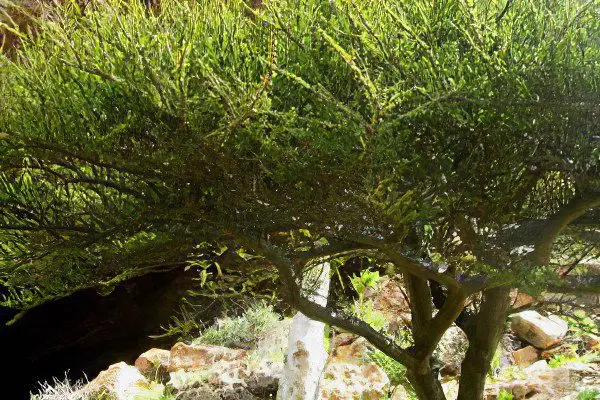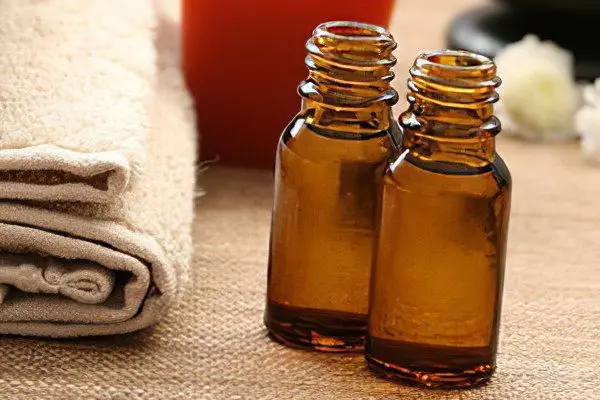Contents
Useful properties and application of myrrh
Description of myrrh

Myrrh is a unique plant that grows in the dry climate of Ethiopia, Sudan and Somalia. Such an interesting small tree reaches only 3 meters in height. It outwardly strongly resembles a cedar of small sizes. At the ends of the branches attached to the trunk are typical thorns. This tree has a sparse leafy cover with small twisted leaves. Most often they are trifoliate, but it also happens that only the middle leaf develops.
The flowers that bloom on this tree, like leaves, often do not reach large sizes. Myrrh petals have a twisted shape. They are colored red or bloody. Small flowers of the plant are always combined into inflorescences in the form of elegant panicles. In the cortex of myrrh are glandular passages. They contain milky juice. It is obtained by cutting the bark of a tree. Drying, the juice hardens and becomes brown with yellowish or gray patches.
Useful properties of myrrh
About ten percent of the active ingredients of myrrh is essential oil. The tree also contains resin, which is three times more than oils. In small quantities, a special mucus was also found in the plant. The tree has a very pleasant balsamic aroma, warm and sweet. But sharp, slightly bitter notes also slip through. One of the useful products of myrrh is resin pieces of various sizes. Usually they have a pleasant amber or slightly brownish color. The darker the color of the resin, the higher its quality.
Myrrh is not without reason called a medicinal plant. It has a wide range of useful properties. The plant perfectly helps in the treatment of the respiratory system affected by serious infectious diseases. Various medicinal preparations containing the presented plant are indicated for colds and bronchitis.
It should be mentioned that myrrh has an excellent astringent and expectorant effect, therefore it is an excellent assistant in the elimination of pulmonary infections. Also, this medicinal plant causes a powerful tonic effect on the stomach and stimulates its work. It has a positive effect on the important digestive system, helps in the fight against diarrhea and helps restore intestinal microflora. Myrrh copes well with various sores in the mouth. Often it is used for gum disease.
The composition of this wonderful plant includes a bioactive complex that serves as a protector of the liver from toxins and improves its performance. It has a restorative effect and helps the healing of mucous membranes. You can see this plant in the composition of various pharmacological agents indicated for the treatment of bruises and abrasions.
Application of myrrh
Myrrh has been used successfully as an expectorant because it can dry out excess mucus inside the lungs. Also, such a wonderful plant can be used as a component for massage oils and mixtures. Special preparations are also used in therapeutic inhalations to restore the respiratory organs.
myrrh oil

There is a legend that myrrh oil was first obtained by shepherds. They collected resin from the wool of the goats they grazed. Resin stuck to it when the goats rubbed against the wooden bark. Oil has been used since ancient civilizations. Warriors took with them on campaigns ointments containing myrrh for healing wounds, because the healing properties of this plant were highly valued. In Egypt, oil was used to create embalming mixtures.
The oil is obtained from the resin by distilling it. Its color can vary from light yellow to deep amber. The aroma of such miraculous oil is smoky, slightly bitter. This product is successfully used as a component of cosmetic products. They boast a deep rejuvenating effect. It is thanks to the presence of myrrh in the product that wrinkles are quickly smoothed out, and the skin becomes matte and acquires unprecedented elasticity. This medicinal plant also eliminates allergic skin diseases.
Myrrh is an excellent remedy for skin rashes, as it has an unsurpassed anti-inflammatory effect. It is also an excellent tool for combating ugly stretch marks on the skin. The plant effectively restores difficult-to-heal extensive wounds and deep ulcers. You can use the oil at home, because it perfectly helps to fight acne and skin lesions.
For the treatment of numerous skin diseases, you need to use myrrh oil in its pure form. But you should be careful and apply the product only on the affected areas of the skin in a small amount. You can also add oil to facial products to increase their effectiveness. Another useful property of the oil is the restoration and strengthening of hair, as well as protection against hair loss. It is enough to add a few drops of oil to your regular shampoo to make your hair more shiny and lush.
The list of useful properties and applications of essential oil does not end there. You can take baths by mixing a few drops of oil with milk and adding this mixture to water. This procedure will make the skin silky and soft. The aroma of myrrh has a beneficial effect on the human nervous system. The oil helps to fight protracted depression, daily stress, and also improves sleep perfectly. To achieve this effect, it is recommended to add 5-6 drops of oil to the aroma lamp.
myrrh tincture
A unique myrrh tincture is created on the basis of the essential oil contained in this medicinal plant. It is excellent for gum disease, mouth ulcers and other inflammatory processes in the oral cavity. It is recommended to add a few drops of oil to a glass of water, mix and rinse your mouth with the resulting product. Rinsing should be done at least twice a day. After this procedure, the inflammation quickly disappears, and the sores heal in a few days.
Such a fantastic tincture has a bitter taste. It can also be used to lubricate the affected areas of the gums with focal inflammation. Given this property of myrrh, it is often added to some professional toothpastes, compensating for the bitterness of the plant with mint oil.
Myrrh contraindications
For external use, this medicinal plant has no contraindications. Myrrh should not be prescribed for various liver diseases, intestinal inflammations and kidney infections in the acute stage. It is not recommended to use the plant inside and expectant mothers.









